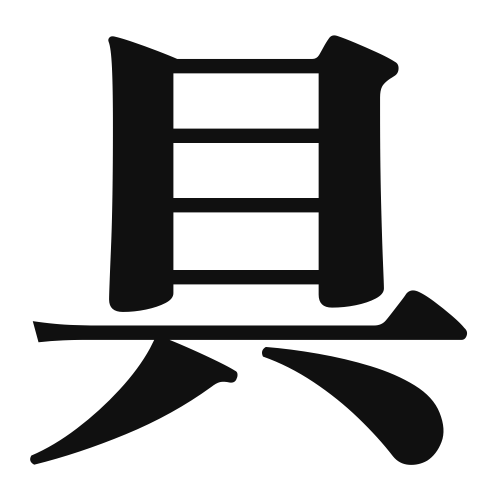1. Overview of Meaning
The kanji “具” (gu) generally means “to equip,” “to provide,” or “to include.” It is often used in contexts related to tools, equipment, or the act of providing necessary elements for a task or situation.
2. Formation and Radical
Formation of the Kanji: The kanji “具” is a compound character that combines elements to convey its meaning. It is formed from the radical “具” itself, which represents the idea of tools or equipment.
Radical: The radical for “具” is also “具,” which signifies the concept of tools or instruments.
3. Examples of Usage
Common Words and Phrases: Some frequently used words that include “具” are:
- 具合 (ぐあい, guai) – condition, state
- 家具 (かぐ, kagu) – furniture
- 道具 (どうぐ, dougu) – tools, implements
Example Sentences in Daily Conversation:
- この道具はとても便利です。 (このどうぐはとてもべんりです。) – This tool is very useful.
- 具合はいかがですか? (ぐあいはいかがですか?) – How is your condition?
4. Synonyms and Antonyms
Similar Kanji: A similar kanji is “備” (び, bi), which means “to prepare” or “to equip.” While both kanji relate to the idea of providing or equipping, “具” often emphasizes the physical tools or elements, whereas “備” focuses more on the act of preparation.
Antonyms: An antonym for “具” could be “欠” (けつ, ketsu), which means “lack” or “deficiency,” indicating the absence of necessary elements.
5. Cultural and Historical Background
Relation to Japanese Culture: The kanji “具” is often associated with various aspects of Japanese culture, particularly in the context of traditional crafts and tools used in daily life.
Proverbs and Idioms: One common idiom is “具にする” (ぐにする, gu ni suru), which means “to equip or prepare thoroughly,” reflecting the importance of being well-prepared in Japanese culture.
